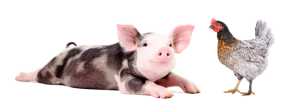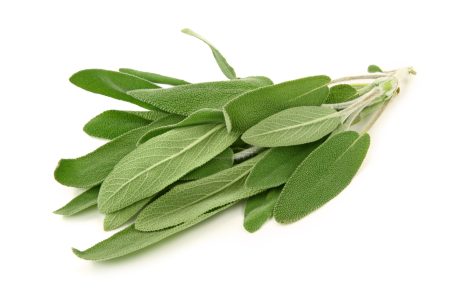 25 Apr 2022
25 Apr 2022
Essential oils and aromatic plants have emerged as potential alternative nutritional additives in the search of natural growth promoters that may replace antibiotic use. The use of antibiotics at subtherapeutic levels has been widely implemented in the swine and poultry industries for the improvement of growth rate and feed utilization efficiency, as well as for reducing morbidity and mortality.

However, many countries have restricted or even banned the use of antibiotics as nutritional additives due to growing concerns regarding the transmission and proliferation of resistant bacteria through the food chain.
Essential oils (EO) are a new type of additive. Very little is still known about their action mechanisms and the extent of their applications in animal feed.
They are a mixture of various compounds (mainly terpenes and terpene derivatives), which are concentrated hydrophobic liquids containing volatile aromatic compounds. These are obtained from plants that possess diverse effects.
Performance response generated by essential oils

Numerous studies have documented the benefits of essential oils on the performance of pigs and poultry.
A key feature to be highlighted is the stability of essential oils during food processing. Maenner et al. (2011) reported a considerable loss of EO activity when a granulation temperature of 58°C was applied.
![]() Li et al. (2012) compared the performance of piglets fed a control diet without supplements with that of piglets fed a diet supplemented with antibiotics or a combination of thymol and cinnamaldehyde. The weight gain, feed conversion, and fecal consistency of the essential oil-fed pigs was essentially the same as that of the antibiotic-fed pigs.
Li et al. (2012) compared the performance of piglets fed a control diet without supplements with that of piglets fed a diet supplemented with antibiotics or a combination of thymol and cinnamaldehyde. The weight gain, feed conversion, and fecal consistency of the essential oil-fed pigs was essentially the same as that of the antibiotic-fed pigs.

It is often claimed that aromatic herbs and essential oils improve the taste and palatability of food, which in turn increases voluntary feed consumption and improves weight gain.
![]() However, pigs may need a few days to adapt to the special taste of essential oils.
However, pigs may need a few days to adapt to the special taste of essential oils.
The application of essential oils and aromatic plants in fattening pigs’ diets seems to fail. Janz et al. (2007) and Yan et al. (2010) didn’t find any yield improvements in completion pigs when including EOs or aromatic plants within their diets.
![]()
However, the supplementation of essential oils in sow diets, especially in those of lactating sows, has gained increased interest.
Miller et al. (2009) reported that a supplementation of 2 g/kg of a EO mixture in pregnant sows, starting 10 days before the estimated due date up until weaning produced:
In a study involving 2100 sows, Allan and Bilkei (2005) reported that sows fed diets containing 1g/kg of oregano presented:
Regulation of intestinal microbiota

Essential oils and aromatic plants are known to possess antibacterial, antifungal, and antiviral activity in in-vitro experiments (Windisch et al., 2008).
| It is widely accepted that essential oils are slightly more effective against gram-positive bacteria than against gram-negative ones (Brenes et al. , 2010; Burt, 2004). |
In-vivo studies also found inhibitory effects against pathogens such as C. perfringens, E. coli and Eimeria species.
Brenes and Roura (2010) argued that minor components are critical to the bacteriostatic activity of essential oils and may have synergistic effects. For example, carvacrol and thymol, the two main components of oregano essential oil, were found to provide an additive effect when tested against S. aureus and P. aeruginosa.
Impact on nutrient absorption and intestinal morphology

Essential oils have been documented to improve the digestibility of nutrients in pigs and poultry. Improvements in nutrient absorption may be explained partly by an increase in salivary secretions, bile, and increased enzyme activity (Jang et al., 2004; Lee et al. , 2003).
Immune system

The gastrointestinal tract’s immune system has the largest lymphoid tissue mass and plays an important role in the antigenic defense of organisms.
Stress relief of intestinal immune defense due to the use of essential oils may contribute to the allocation of nutrients for animal growth, development and/or reproduction rather than for immune response purposes.
 Essential oil supplementation has been reported to improve piglets’ immune status after weaning, as indicated by an increase in:
Essential oil supplementation has been reported to improve piglets’ immune status after weaning, as indicated by an increase in:
Antioxidant effects

To prolong storage stability of food, synthetic antioxidants are used in industrial processing. However, the use of some of these synthetic antioxidants has been questioned due to their carcinogenic potential.
![]() In addition to this, widespread rejection of synthetic food additives has grown amongst consumers.
In addition to this, widespread rejection of synthetic food additives has grown amongst consumers.
For such reasons, there is a growing interest in studies involving natural additives and their use as potential antioxidants .

Herbs of the Labiatae family, particularly rosemary, oregano, and sage, have been widely studied for their antioxidant activity.
In addition to the benefits on meat quality, essential oils or plant extracts are also reported to improve redox balance in different organs and mitigate oxidative damage induced by different physiological stressors (Wang et al. , 2008; Zeng et al., 2014).

An experiment was conducted in which different concentrations of ginger root powder and its essential oils were fed to broilers raised in heat stress conditions [33].
Broilers receiving 150 mg/kg of ginger EO increased superoxide dismutase (SOD) activity and decreased malondialdehyde (MDA) concentrations in the liver compared to the control group.
Dietary supplementation of vitamin E, ginger root powder or its EO, increased total antioxidant capacity (TAC) and decreased serum MDA concentrations compared to the control group.
Conclusions
The search of alternatives that can replace antibiotics has drawn great interest in recent years. A new generation of feed additives which includes herbs and essential oils, as well as their beneficial effects on animal production has been well documented.
In the future, it will be necessary to determine the components of essential oils in detail, in order to evaluate their different biological effects. Making it possible to compare different EO products, and formulate mixtures that optimize their efficacy.
Subscribe now to the technical magazine of animal nutrition
AUTHORS

Nutritional Interventions to Improve Fertility in Male Broiler Breeders
Edgar Oviedo
The Use of Organic Acids in Poultry: A Natural Path to Health and Productivity
M. Naeem
Synergistic Benefits of Prebiotics and Probiotics in Poultry, Swine, and Cattle
Gustavo Adolfo Quintana-Ospina
Hybrid Rye Potential in Laying Hen Feed Rations
Gwendolyn Jones
A day in the life of phosphorus in pigs: Part I
Rafael Duran Giménez-Rico
Use of enzymes in diets for ruminants
Braulio de la Calle Campos
Minerals and Hoof Health in the Pregnant Sow
Juan Gabriel Espino
Impact of Oxidized Fats on Swine Reproduction and Offspring
Maria Alejandra Perez Alvarado